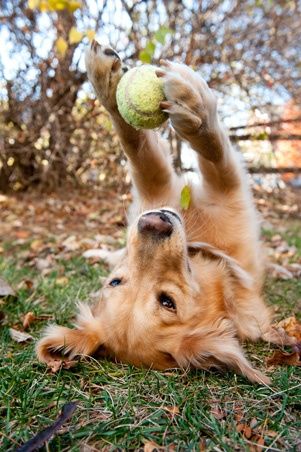Dog / Detail
Clingy and Cranky: Understanding and Addressing Your Dog's Neediness
Jonathan Bennet | 07 August 2024 | 18:20
Many dog owners cherish the unwavering loyalty and affection their pets show. However, when this affection transforms into clinginess and crankiness, it can pose a challenge. Understanding the root causes of this behaviour is crucial for effectively addressing it.

Why is My Dog So Clingy?
Several factors contribute to a dog's clingy behaviour:
Separation Anxiety: This is a common issue where dogs become distressed when separated from their owners. It can manifest as whining, barking, destructive behaviour, or even accidents in the house.

Lack of Stimulation: Bored dogs often seek attention to alleviate boredom. They may become clingy as a way to engage with their owners.
Age-Related Changes: Older dogs might experience cognitive decline or physical discomfort, leading to increased dependence and clinginess.
Medical Issues: Underlying health problems can cause pain, discomfort, or confusion, making dogs more reliant on their owners.

The Baby-Carrying Conundrum
Carrying your dog like a baby might seem like a harmless gesture of affection, but it can inadvertently reinforce clingy behaviour.
While it's tempting to indulge your furry friend, it's essential to consider the long-term consequences. Carrying your dog can hinder their development of independence and can lead to increased reliance on you for comfort.

Addressing Clinginess and Crankiness
Here are some strategies to help your dog overcome clinginess and crankiness:
Identify the Cause: Try to determine the underlying reason for your dog's behaviour. Consulting with a veterinarian or a professional dog trainer can be helpful.
Gradual Separation: If separation anxiety is the culprit, gradually increase the time you spend away from your dog. Start with short absences and gradually extend them.
Mental and Physical Stimulation: Provide your dog with plenty of opportunities for exercise and mental stimulation. Engage in interactive play, puzzle toys, and training sessions.
Create a Comfortable Space: Designate a quiet and comfortable area for your dog to relax when you're not around. Provide them with their favorite toys, blankets, and treats.
Ignore Attention-Seeking Behaviours: Avoid rewarding clingy behaviour by giving in to demands for attention. Instead, focus on rewarding calm and independent behaviour.
Consistency: It's essential to be consistent in your approach. All family members should follow the same rules.
Professional Help: If you're struggling to manage your dog's behaviour, consider seeking guidance from a qualified dog trainer or behaviourist.

Building Independence
Encouraging independence is crucial for a well-adjusted dog. Here are some tips:
Teach Basic Commands: Obedience training helps dogs learn to focus on you and follow instructions.
Create Routines: Establish a predictable daily routine to provide your dog with a sense of security.
Solo Activities: Encourage your dog to enjoy solitary activities like chewing on bones or playing with puzzle toys.
Positive Reinforcement: Reward your dog for spending time alone or engaging in independent activities.
When to Seek Professional Help
If your dog's clinginess and crankiness are severe or significantly impacting your life, it's essential to seek professional help. A qualified dog trainer or behaviourist can provide tailored guidance and support.
Remember, addressing clinginess and crankiness requires patience and consistency. By understanding the root causes and implementing appropriate strategies, you can help your dog develop a healthier and more independent mindset.

Big Dogs, Small Dogs, Same Problems
Contrary to popular belief, clinginess and crankiness aren't exclusive to small dogs. Larger breeds can also exhibit these behaviours. While the manifestations might differ, the underlying causes and solutions remain the same. The key is to focus on the individual dog's needs and tailor your approach accordingly.
By understanding the factors that contribute to clingy behaviour and implementing effective strategies, you can create a harmonious relationship with your dog, regardless of their size.
Related
-

The Healing Power of Dogs: How Canine Therapy is Revolutionizing Mental Health and Boosting Positive Energy in Humans
Dog14 November 2024
-

A Pawsitive History: Dogs of Nuremberg
Dog09 November 2024
-

The Role of Oxytocin in the Human-Dog Bond: The Science Behind Our Deep Connection
Dog06 November 2024
-

Beyond the Beach: Jamaica's Dog Lovers
Dog29 October 2024
-

A Dog's Delights: Homemade Snacks for Our Furry Babies, Recipes Included!
Dog29 October 2024
-

A Dog's Disorientation: Understanding Your Dogs' Wanderlust
Dog29 October 2024
Popular
-

-

A Pawsitive History: Dogs of Nuremberg
09 November 2024 -

-

Beyond the Beach: Jamaica's Dog Lovers
29 October 2024 -
